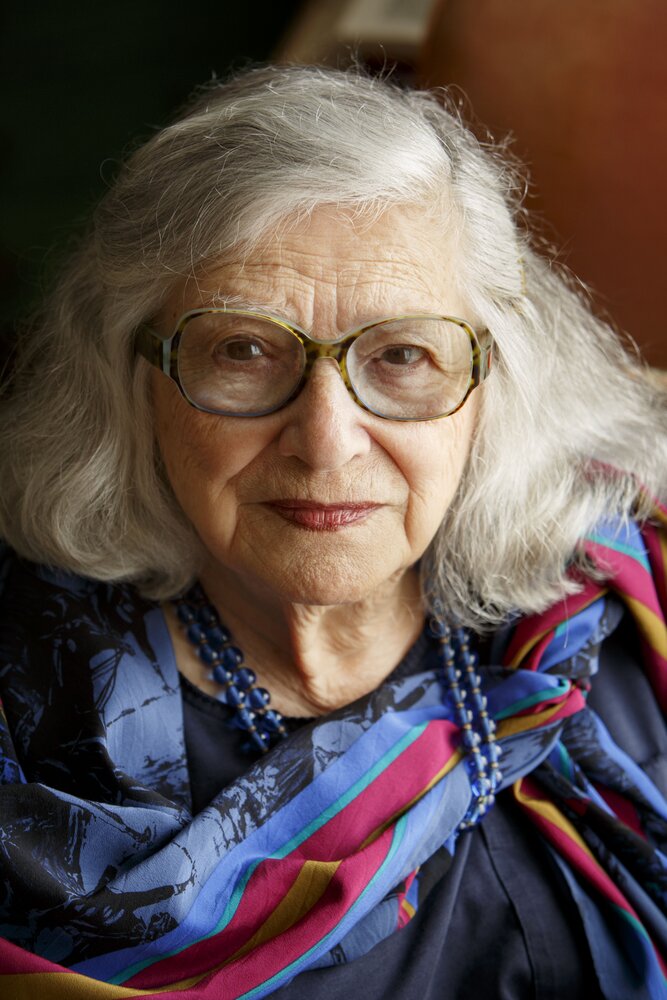

Share Your Memory of
Irena
Obituary of Irena Urdang deTour
Irena (Ehrich vel Slusny) Urdang de Tour was born on December 17, 1924 in Warsaw, Poland. She was 14 years old when the Nazis invaded Poland. During the war, she escaped from the Warsaw Ghetto and then spent nights locked in a Warsaw jewelry shop, as she was selling the jeweler family heirlooms to pay to keep her mother and sister in hiding elsewhere. For a time, she survived as a Christian on false papers but was subsequently persecuted as a Pole and sent to a slave labor camp outside of Berlin, making explosives.
She came to America in August 1946 on the Marine Perch from Bremerhaven, Germany, with her mother Felicia (Lubelczyk) Ehrlich vel Sluszny (d. 1983) and her sister Dr. Danuta Ehrlich of Chicago, with only seven dollars in her pocket. She earned a bachelor's degree from Hunter College and worked her way through most of a master’s in the classics program there. She worked in various editorial capacities at magazines including Gourmet (her first article published in English in 1950), Outdoor Life, Town and Country, and the Paris Review, when George Plimpton was there.
She married the lexicographer Laurence Urdang in 1952 (https://www.nytimes.com/2008/08/26/books/26urdang.html) and lived in Manhattan, establishing a gallery for emerging artists with Robert Frost’s daughter, Lesley Frost Ballantine, in the Lower East Side, and hosting weekly Wednesday salons in the 1960s for artists, writers, and professors. In 1971, the family moved to Essex, Connecticut where she established an art and antiques business named Irena Urdang's Detour, as it was a detour from Manhattan. Her clients included Judith Lieber who used her vintage handbag collection for inspiration, and Zack Carr of Calvin Klein who bought vintage menswear from her for design ideas.
She loved languages and was fluent in Polish, Italian, and English, but she also spoke credible German, Yiddish, French and Russian. Until her death, she was studying German and reading literature.
She was deeply invested in humanitarian causes and avidly watched the news, always relating empathically to global inequities and tragedies.
She was ahead of her time in buying everything second hand from auctions, tag sales and thrift shops. She was wearing antique and vintage clothes before they became fashionable, including men’s shirts before Annie Hall aired. Perennially creative, she was a collage artist, writer, gourmet cook--and decorator, with a unique ability to blend all styles into one cohesive aesthetic.
Her memoirs, poetry, journals, travelogues, poems, and ephemera are archived at the Schlesinger Library at Harvard. She has also exhibited her Holocaust memorabilia and personal papers at the Thomas Dodd center at the University of Connecticut at Storrs, and contributed to their historical archives of materials for their Holocaust Studies program.
She died one day after her 98th birthday on December 18, 2022 of congestive heart failure. She is survived by two daughters, Nicole Urdang of Buffalo and Alexandra Urdang of Quogue, New York, and three grandchildren Madeline Urdang Martin, Maxwell Urdang Taylor, and Harrison Urdang Messer.
Memorial contributions maybe made in her name to the Anti-Defamation League, 605 Third Avenue, New York, NY 10158-3650 www.adl.org
Funeral services were held on December 21, 2022 at the Robinson, Wright & Weymer Funeral Home, Centerbrook, Connecticut. Burial followed at Fountain Hill Cemetery, Deep River, Connecticut.


